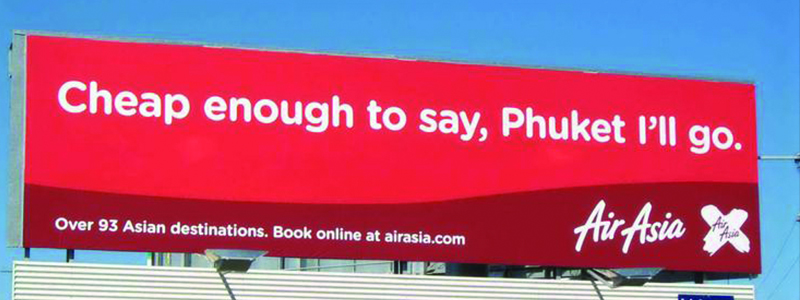Out of Home Advertising: Standing the Test of Time
Out of Home (OOH) advertising, which is literally taken to mean all the advertisements you see when you step out of your home, is a medium that has been around for a long time.
Back in the 1790s, during the invention of oil printing, posters began appearing in populated locations and the first 24-sheet billboard was displayed at the 1889 Paris Exposition.
During the age of automobiles in the 1920s, billboards shifted their location from fences and building tops to the side of roads where we see them up until this very day. Gradually, big brands like Ford and Coca Cola started advertising to large audiences using this medium, and such a phenomenon spread worldwide in no time.
Though we commonly confer that the 19th century marked the spread of OOH advertising as a medium, recent discoveries have proved otherwise. Billboards have been found to have been used centuries ago in Ancient Egypt, as huge hieroglyphs had been unearthed from the ancient city of Elkab, Egypt, which came as a surprise to several archaeologists, as most writing during that era was done on smaller tablets. With the number of tablets discovered, researchers came to the conclusion that its huge size was meant to increase the visibility of the tablets and further, it was noted that these tablets seemed to be placed at crowded junctions.
It’s been many centuries since, but OOH advertising still contributes as a major part of modern brands’ marketing strategies. According to MAGNA Intelligence’s survey across 22 key markets, the OOH market share has remained stable for the last five years and is even growing in markets such as France and Russia, despite many forms of media losing out to newer technologies.
With the whole world driving towards a digital lifestyle, one may wonder why OOH advertising still remained popular. Here are some reasons why:
- The time spent by potential customers outside of their home is on the rise. This means that people are more likely to look at billboards now than ever before.
- There is no option to skip OOH ads; unlike digital advertisements that can be skipped, OOH ads are sure to convey the message if they can capture the viewer’s’ attention. In fact, at least half the audience can be reached in all cases (MAGMA research statistics).
- The potential of measuring OOH ads is on the rise, GPS, eye-tracking, location and wi-fi has been put to use to maximize effectiveness.
- Capacity for localization; because OOH ads can be customized in accordance with the type of audience in particular areas, there is no need to follow a generic format across locations. This brings freshness and makes the product seem more personal to viewers.
- Traditional OOH has been adapted into the digital realm with digital billboards and panels. Termed as DOOH (Digital Out of Home), it is one of the fastest growing media today for advertising.
Like for every other medium, creativity is an integral factor when it comes to making OOH ads. Today, billboards and panels advertising products appear at every corner of the street but only a few stand out to viewers. Here are a few examples of outstanding OOH ads from over the years:
1. Coca Cola’s 1931 Holiday Billboard: This billboard shows the potential of outdoor advertising to affect popular culture. The image that we have come to associate with Santa Claus originated with this ad. Coca Cola replaced the then popular elf-like image of Santa Claus with their red, round and old one.
2. Bic Razor: This brand made use of natural topography to show how well their product works. There are almost no words used (except the brand’s name) and yet the message couldn’t get any clearer for viewers!
[vc_single_image image=”9115″ img_size=”large” alignment=”center”]3. Coca Cola: Coca Cola has had many iconic billboards over the years. This is one that makes use of the billboards on either side to advertise their product and add humour at the same time.
[vc_single_image image=”9116″ img_size=”large” alignment=”center”]4. Oreo Eclipse: Oreo used a DOOH billboard with real-time marketing in mind (March 2015). The creators of the ad made use of the solar eclipse that was going to occur that day and portrayed the entire phenomenon with their signature cookie.
[vc_single_image image=”9117″ img_size=”large” alignment=”center”]5. The Economist: Interactive panels are a good way to make customers remember a brand. The Economist’s panel featured a light bulb that would light up when someone walked under it. This was a very clever way to advertise the effects of reading a copy of their product.
[vc_single_image image=”9118″ img_size=”large” alignment=”center”]OOH as a medium of advertising provides lot of scope for fresh ideas and guarantees a high rate of visibility. Despite the growth of digital media, this form is sure to stick around for a long time to come.

